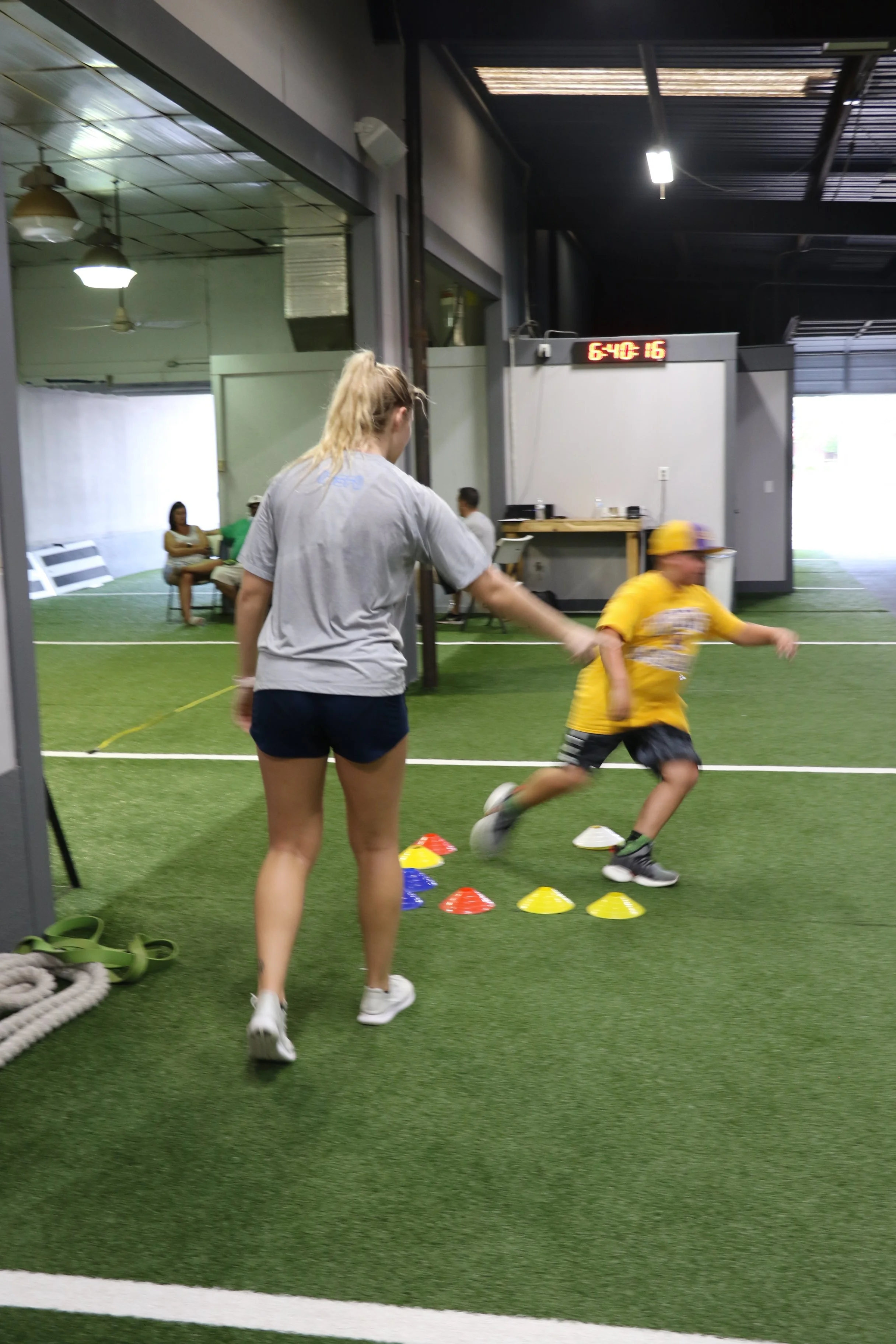Why is speed training important to ALL athletes?
Often times, agility-based athletes, such as volleyball, basketball, tennis, baseball and even soccer athletes, will question their need for speed training. Many times these athletes will dismiss the need for linear speed and focus solely on lateral movement patterns and drills focused on change of direction. This is understandable, and these types of drills are very important. However, skipping linear speed, especially maximum velocity development, will leave you missing out on your optimal performance.
First, it is important to understand speed reserve.
We all have a maximum speed with which we can sprint. Most of our athletes can sprint anywhere from 13-19mph. When we are competing in agility-based sports, we tend to compete at a speed that is a relative percentage of our maximum velocity. For this example, let’s say that our max speed is 18 mph. We play basketball at 70% of our max velocity. This is the speed that allows us to stay in control of our movements while we are navigating both sides of the court. That 70% of 18mph (max velocity) is 12.6. So, we will play the majority of the competition at 12.6mph with slight fluctuations both ways. Now, if we raise the maximum velocity of that athlete from 18 to 20 miles per hour AND we continue to compete at 70%, we are now competing at 14 mph. We are not exerting any additional effort because we are still moving at 70% effort. However, we are using that same effort and moving significantly faster.
As you can imagine, this also has a conditioning benefit. If we are running faster with the same level of effort, then we are getting to the next point in less time, allowing for additional rest time.
This is a win, win, win. Move faster, get there earlier, rest more! Sounds like a good reason for all athletes to start sprinting more.
Not convinced?
Another highly important reason to incorporate linear speed training into your program is the physiological training effect. All that means is that something cool is happening at the cellular level in the muscles.
Training, in essence, is all about placing your body in situations and inducing strain that forces the body to grow. This growth could be in muscle size, muscle function or neurological function. Based on the exercise, you could be targeting one or more of these foci. For example, most heavy squats are performed with a weight that only allow you to move the bar at .3 - .5 meters / second (m/s). This is a fairly slow movement. However, we need that in order to improve strength and size in the muscle. Power cleans, which are movements that are typically used to improve the force output or power of the muscular system, are performed at 1.3 – 1.5 m/s. This is significantly faster than the squat example. This movement will typically have less weight, but will move significantly faster through a greater range of motion.
Now, if our goal is to create a stimulus that causes the body to move faster than it typically moves, then shouldn’t we be moving at the absolute fastest we can move? The answer is YES!
Most high school and collegiate sprinters will move at 7-9 m/s. This is significantly faster than anything we can do in the weight room. As an athlete moves through their sprinting stride they must move the limb fast enough to be in the proper place for the next foot contact while also applying enough force to continue to accelerate the body. These are VERY fast contractions. By training the muscle to contract this quickly, we are also training it’s explosive capacities. NOW, take these same explosive capacities and apply them to your agility or change of direction drills. You trained the muscle to contract faster, a skill that it has now acquired. Now reposition the limb in order to move laterally instead of linearly. The repositioned limb will use the same, newly acquired, explosive traits to move the body quicker laterally instead of linearly. This is just one of the ways that linear speed training will improve lateral change of direction.
Now, we could continue to go on regarding linear speed training’s ability to improve range of motion at the hip, co-contraction abilities in antagonist muscle groups and the improved efficiency of neurological firing. However, instead of boring you, suffice it to say, EVERYONE should be sprinting in order to be a better athlete!



